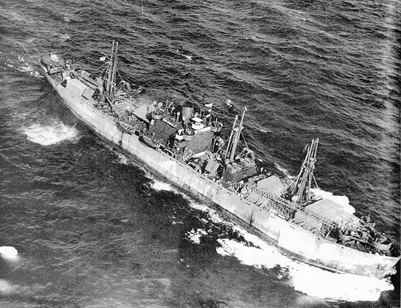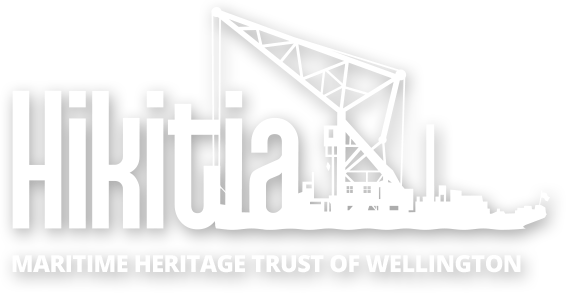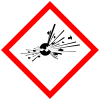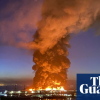Fifty years ago, a ship came close to doing as much damage to central Wellington as an architect mayor and a posse of property speculators. The danger of waterfront fire increased dramatically during the Second World War when the major ports, Auckland and Wellington especially, were filled to overflowing with Allied shipping using the country as a staging post for the bloody reconquest of the Pacific. The risk climbed exponentially in 1942-43 when the Americans began bringing in tens of thousands of tonnes of ammunition.
Wartime security measures kept secret most of the close shaves experienced down at the docks. Several fires took place aboard ships in wartime Wellington where overcrowded wharves, inexperienced labour, dangerous cargoes, and the need to make running repairs while ships were working cargo made or a potentially explosive mix. Some ships caught fire while welders were repairing storm damage. Fire broke out aboard another two, the US Navy attack cargo ships USS Cetus and USS Serpens, as a result of the spontaneous combustion of the chemically treated sandbags piled around the superstructure for splinter protection. Less than a year after its Wellington incident, the USS Serpens blew up at Guadalcanal with the loss of all but two of the crew of over 150. Wreckage crashed down on the New Zealand Fairmile ML 400, damaging deck fittings.
The ship that almost remodelled central Wellington was the John Davenport. In contrast to the sophisticated naval attack cargo ships, the John Davenport was a merchant marine-manned Liberty ship. Liberty ships were constructed in US shipyards between 1941 and 1945 to supplement the pre-war US Maritime Commission programme. Built to a British ‘ships by the mile and chopped off by the yard’ philosophy by largely inexperienced shipbuilders, the Liberties were expendable stopgaps (although many proved surprisingly durable). More than 2700 took to the water. Simple craft of about 7176 tons gross, they could carry about 10,900 tonnes of cargo at a speed of 11 knots.
The John Davenport, having come from New York via Panama, arrived at Wellington early on the morning of 3 July 1943 and anchored in the stream. The cargo included over 3000 tonnes of munitions intended for the planned offensive in Rabaul, New Guinea and Truk. Some of the bombs were 2722-kilogram ‘blockbusters’ and the cargo was the largest pile of high explosives the port had seen. Later that day the ship was brought alongside Queen’s Wharf No 2 berth for unloading and urgent deck repairs.
Four days later the John Davenport lay at the wharf, just one of many grey-painted freighters working cargo as fast as its gear would allow. Then, at about 0530 hours on 7 July, the crew reported a fire deep in the No 3 hold, just forward of the bridge. Whether it was connected to the early welding work, we will never know. Few who knew anything about the Davenport’s cargo took the time to ponder such niceties that morning. Panic broke out among the crew, half of whom were seen scrambling out the wharf gates by the crew of the first appliance from Wellington Central Station as it passed them on the opposite direction.

Liberty ship John W Brown (now preserved in Baltimore) outward-bound in June 1943. Note the cluttered decks. No 3 hatch, where the fire was on the John Davenport, is immediately in front of the bridge structure.
By the time the brigade appliances had drawn up the John Davenport’s master had decided that it was not worth fighting the fire. He could be forgiven for losing heart. Possibly remembering the explosion of the 3000 tonnes of explosives aboard the munitions ship Mont Blanc at Halifax in December 1917, which claimed 3000 lives and demolished 5000 buildings, the John Davenport’s master decided to make for the middle of the harbour and scuttle his ship as soon as possible.
Wellington Chief Fire Officer Charles Woolley, though, was made of sterner stuff. He asked to be allowed to assess the state of the fire before sacrificing a valuable ship and cargo. The skipper gave him 10 minutes’ grace to go below. The only way to do this was down a manhole and through a lot of smoke. After scrambling down the ladders Woolley found that the fire was very deep-seated. There was no way of reaching it without removing a great deal of cargo; nevertheless, he felt that it was worth trying and scrambled topsides to advise his nervous fire crew. Looking back on that incident in the August 1954 issue of the New Zealand Fire Service Review, one firefighter recalled that:
The way below was down a manhole and into the smoke. The fire was well down and not to be reached without a lot of cargo shifting. The Chief came up in bad shape, half suffocated, but he said they would give it a go and would lick it. Then he temporarily took the count and was out for the next few rounds. Another officer who went down with smoke gear confirmed Woolley’s assessment.
Just before passing out from the effects of the smoke, Woolley recommended moving the ship around to Aotea Quay, where the floating crane Hikitia could move the cased aircraft that blocked access to the seat of the fire and where – though he scarcely dared think about it at the time – the effect of any explosion on the city would be less severe if anything went wrong.
After consulting with Captain WM McLeod from the harbourmaster’s office, the John Davenport’s officers, and remaining seamen got their ship underway at 0810 hours. According to one seafarer, the tension made it ‘the longest sea voyage in history’. Although the ship was moved under its own power, the Union Company’s port tug Terawhiti provided help. Four city brigadesmen remained to do what they could with the ship’s firefighting equipment.
After a short but nerve-wracking journey, the John Davenport pulled alongside the Aotea Quay No 2 berth at 0920 hours. Waiting for it were the Hikitia, four appliances and almost 30 firefighters. The floating crane went alongside and hoisted the aircraft clear of the hatch covers. Then it was the turn of the firefighters, who quickly isolated the source of the blaze and brought it under control. As ship fires went, it was nothing to brag about but the cargo surrounding it possessed an explosive potential unequalled in local history. Had the munitions exploded while the John Davenport was at Queen’s Wharf, the blast might have devastated much of the central business district of Wellington and claimed many thousands of lives. Fortunately, Woolley’s gamble paid off.

The John Davenport suffered only minor damage and was ready for sea again by 25 July, when it sailed off into obscurity. Wartime censorship prevented Wellingtonians learning how close they had come to being blasted off their hillsides. Indeed the story became public only in 1954 when Woolley touched on it briefly in his retirement speech.
The John Davenport also went quietly. Unlike many of its sister vessels, it did not enter commercial service after the war. After languishing in the United States Maritime Commission reserve fleet for many years, it went to the breakers at Philadelphia in July 1960.
From New Zealand Nautical Yarns
by Gavin McLean
Additional comment by John Ackrill:
Hikitia was berthed at Fryatt Quay when the call came, with 4 lifts from the previous day still on deck. They must have put these ashore in a hurry, though it wasn’t far to go to Aotea Quay No 2.
Hikitia’s lifting log for 7 July 1943 merely says ‘Lifting 17 cases (7 lifts) from James (sic) Davenport at Aotea Quay and shipping to Aotea Quay’
The time taken was 2hr 30min, so I would say the cases were all lifted off the Davenport onto Hikitia’s deck, then all landed on Aotea Quay. But they certainly weren’t mucking about!! Nr of lifts was 7 and weight (per lift), 4t 10cwt.
The log for 23 July says ‘Lifting 17 cases (6 left) from Aotea Quay for “James Davenport”. These remained on board overnight’, and that for 24 July, ‘Stacking above cases on nr 3 hatch, “James Davenport”.
There have been, over the years, a large number of munitions explosions – more than a few on ships – around the world.
Among the more well-known are the French ship Mont-Blanc which, loaded with ammunition, exploded after a collision in Halifax, Nova Scotia in 1917 causing over 11,000 casualties and destroying or damaging over 5 000 dwellings; the British ship Fort Stikine which blew up in the port of Bombay in 1944 causing massive damage, killing over 1,000 and making 80,000 homeless; and the Port Chicago disaster, also in 1944, when an ammunitions magazine exploded at Port Chicago, California, while a ship was being loaded with munitions for the Pacific war.
For further information and other stories



